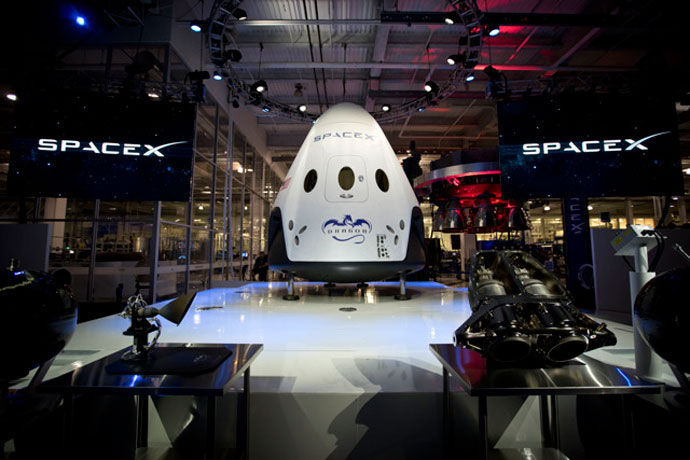SpaceX Reveals The DragonV2, New Spacecraft To Taxi U.S. Astronauts Into Orbit
Good for his word, SpaceX CEO Elon Musk unveiled the brand new DragonV2 Thursday night at the company’s headquarters in Hawthorne, Calif. The new “space taxi” is an upgraded version of the Dragon cargo ship, which has already delivered food and supplies to and from the International Space Station three times since 2012 as part of a $1.6 billion agreement with NASA.
The DragonV2 spacecraft’s main features include enough space for seven crewmembers and the ability to “land anywhere on Earth with the accuracy of a helicopter,” according to Musk. The Dragon cargo ship is designed to land in the ocean.
SpaceX is one of the three companies, also including Boeing and Sierra Nevada to vie for a new contract with NASA to use their spacecrafts to shuttle astronauts to space and back. All three companies reportedly received funding from NASA’s Commercial Crew Transportation Capability program to develop a space taxi with the goal of having one ready to use by 2017. There is speculation that SpaceX might have a slight leg up on the competition due to its current relationship with NASA.
Currently the U.S. is entirely dependent on the use of Russia’s Soyuz spacecraft since NASA retired its fleet of shuttles in 2011. And it’s coming at a bigger price than a loss of pride—try $71 million per person for one round trip to and from the space station. So, it’s no surprise that the reveal of the DragonV2 comes as a breath of fresh air in the midst of tension between U.S. and Russia over the Ukraine crisis, and Musk is well aware. His April 29 tweet, promising a timely unveiling, alluded to a comment by Russia’s deputy prime minister, Dmitry Rogozin, who is in charge of space and defense industries, when he said that U.S. sanctions could “boomerang” against the U.S. space program, and perhaps NASA should “deliver their astronauts to the International Space Station using a trampoline.”
Musk simply had this to say.
Sounds like this might be a good time to unveil the new Dragon Mk 2 spaceship that @SpaceX has been working on w @NASA. No trampoline needed
— Elon Musk (@elonmusk) April 29, 2014
No trampoline needed, indeed.










































